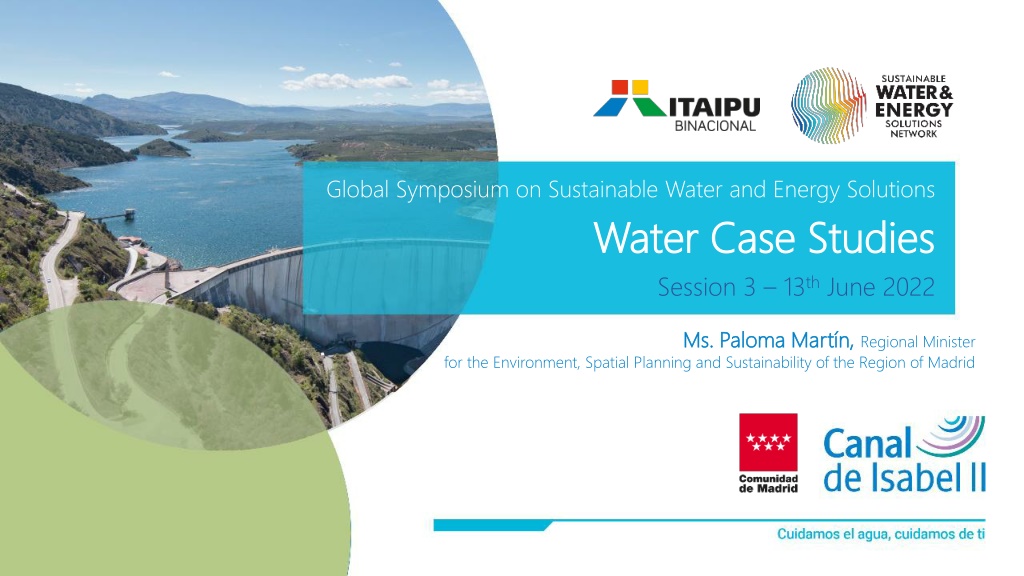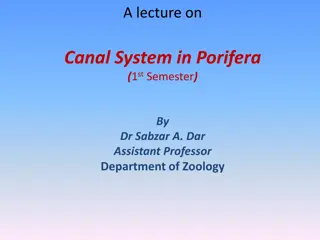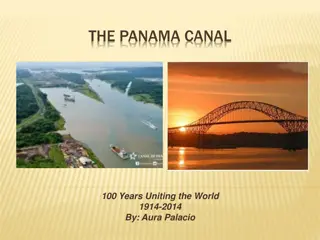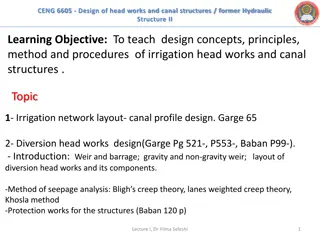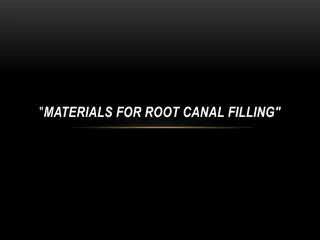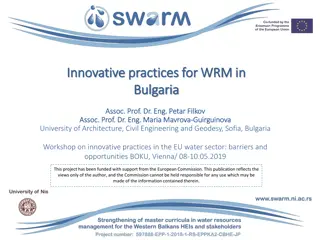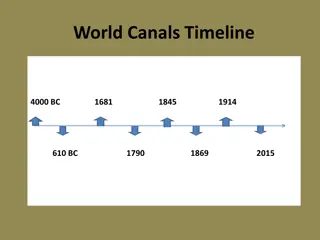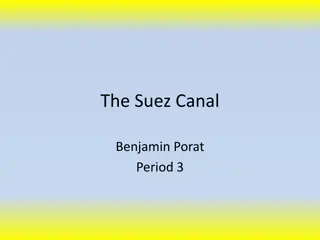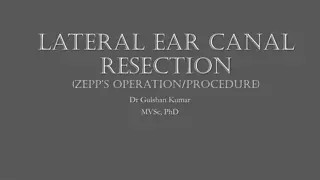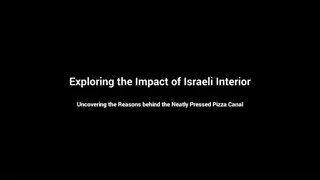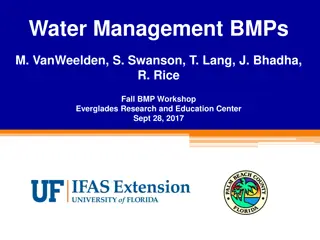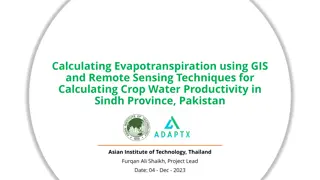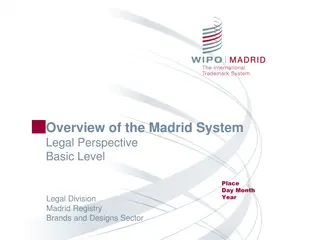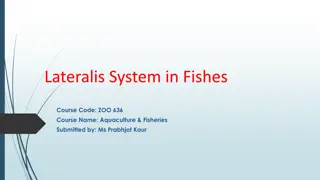Innovative Water Management Strategies at Canal de Isabel II in Madrid
Explore the successful water management practices at Canal de Isabel II in Madrid, serving 6.74 million inhabitants. The integrated water cycle approach includes capture, treatment, regeneration, and distribution of water, ensuring sustainability and quality for various uses like irrigation and industrial processes.
Download Presentation

Please find below an Image/Link to download the presentation.
The content on the website is provided AS IS for your information and personal use only. It may not be sold, licensed, or shared on other websites without obtaining consent from the author. Download presentation by click this link. If you encounter any issues during the download, it is possible that the publisher has removed the file from their server.
E N D
Presentation Transcript
Global Symposium on Sustainable Water and Energy Solutions Water Case Studies Water Case Studies Session 3 13thJune 2022 Ms. Paloma Mart n, Ms. Paloma Mart n, Regional Minister for the Environment, Spatial Planning and Sustainability of the Region of Madrid
WATER CASE STUDIES: CANAL DE ISABEL II REGI N DE MADRID MADRID 6,74 million inhabitants An area of 8000 km 179 (municipalities) Urban growth and sprawl.
WATER CASE STUDIES: CANAL DE ISABEL II The Urban water cycle CATCHMENT: CANAL DE ISABEL II CANAL DE ISABEL II Overall management: Economies of scale and operational synergies through the integral water cycle services. Reservoirs and wells make up the majority of the water captured by Canal to supply the Community of Madrid. REGENERATION: Treated waste water is regenerated through a terciary treatment for use in street cleaning, irrigation of parks and gardens, golf courses and industrial uses. TREATMENT: Raw water arrives at our drinking water treatment plants by means of large canals, where we use cutting-edge technologies in water treatment to guarantee water quality before its consumption. SANITATION and WWT: Waste water transportation through the sewage network ending to be treated at one of our waste water treatment plants and to be discharge into the rivers in optimum condition. DISTRIBUTION: Mains pipes,large tanks and the distribution network guarantee a continuous service with optimum pressure and quality expected.
WATER CASE STUDIES: CANAL DE ISABEL II 1. SUPPLY With 14 drinking water treatment plants we are able to provide service to a population of almost 6.8 million. CATCHMENT 13 13 reservoirs reservoirs and 78 and 78 wells wells TREATMENT 14 14 drinking drinking water water treatment treatment plant plant ( (DWTP DWTP) ) DISTRIBUTION over 8.000 8.000 Km2 17.600 km 17.600 km network network over
WATER CASE STUDIES: CANAL DE ISABEL II 2. SANITATION Just 8 waste water treatment plants treat sewage water generated by 4 million inhabitants. Basin river management. SEWERAGE NETWORK 15.000 km of network used in the collection of waste water and conveyance to a waste water treatment plant. WASTE WATER TREATMENT 65 S 65 Storm torm tanks tanks for for ranoff ranoff management management 156 156 WASTER WATER TREATMENT PLANTS WASTER WATER TREATMENT PLANTS ( (WWTP WWTP) ).
WATER CASE STUDIES: CANAL DE ISABEL II 3. REGENERATION 29 Hm Hm3 3: In 2021, our facilities regenerated 120 120, ,29 08 Hm Hm3 3 has been distributed as reclaimed water. 16 16, ,08 21 Hm Hm3 3 has been discharged into our rivers to improve 104 104, ,21 both quality and flow. 16.08 15.9 15.9 13.1 12.912.4 12.0 11.8 10.4 9.8 9.1 6.8 6.2 6.2 2.0 26 26 municipalities municipalities benefited benefited from from this this service service in 2021. 200720082009201020112012201320142015201620172018201920202021 33 33 regeneration regeneration plants plants and 706 kilometres of 706 kilometres of network network. . Reclaimed water consumption trend in Hm3 2007 - 2021
WATER CASE STUDIES: CANAL DE ISABEL II INTEGRATED ENVIRONMENTAL MANAGEMENT The circular economy and the water-energy union. We use dams to produce hydraulic energy Advanced environmental processes , such as sludge recovery, a bi-product of waste water treatment used as fertiliser in agriculture. Obtain fertilisers extracting the nutrients in sludge. Manufacturing of estruvita Biogas used to generate electricity and to provide biomethane for use in vehicles. Optimum production of renewable energies in any given facility.
Other factors that have contributed to the success of Canal s model. 1. Investment efficiency: Economies of scale. Capital-intensive investments and services for everyone. 2. Tender procedure. Advantages of large-scale operations. 3. Organizatizational advantages: Workplace efficiency. Integrated Centralised Control Network sectorisation for reducing water loss Emmergency service communication network. VIG A surveillence tool
www.canaldeisabelsegunda.es If you require any further information, please feel free to contact us: contacto@canal.madrid We take care of the water, we take care of you We take care of the water, we take care of you 9
